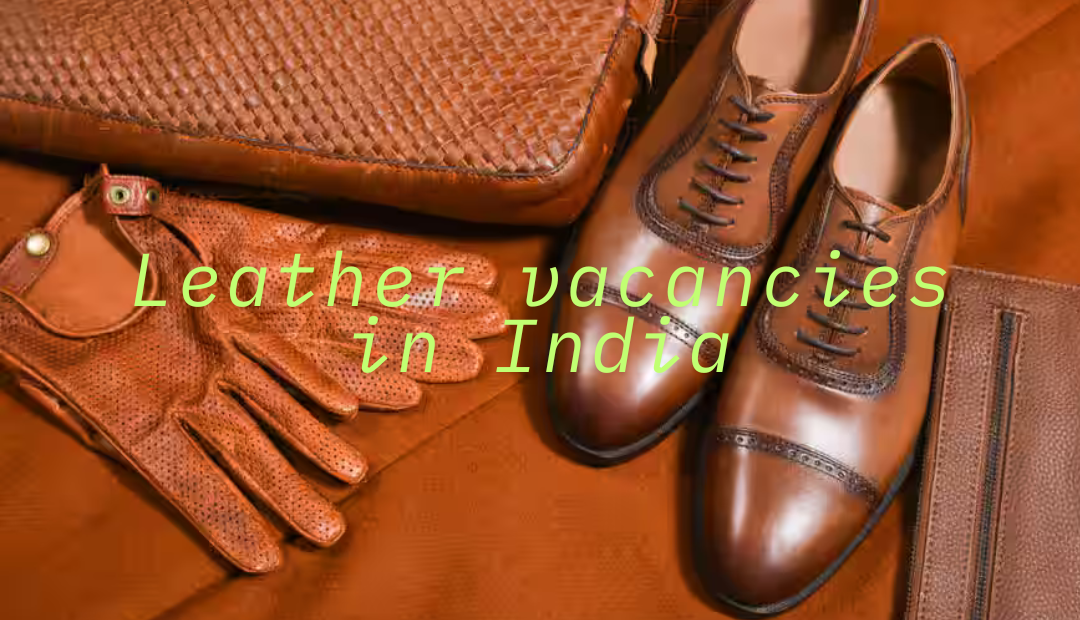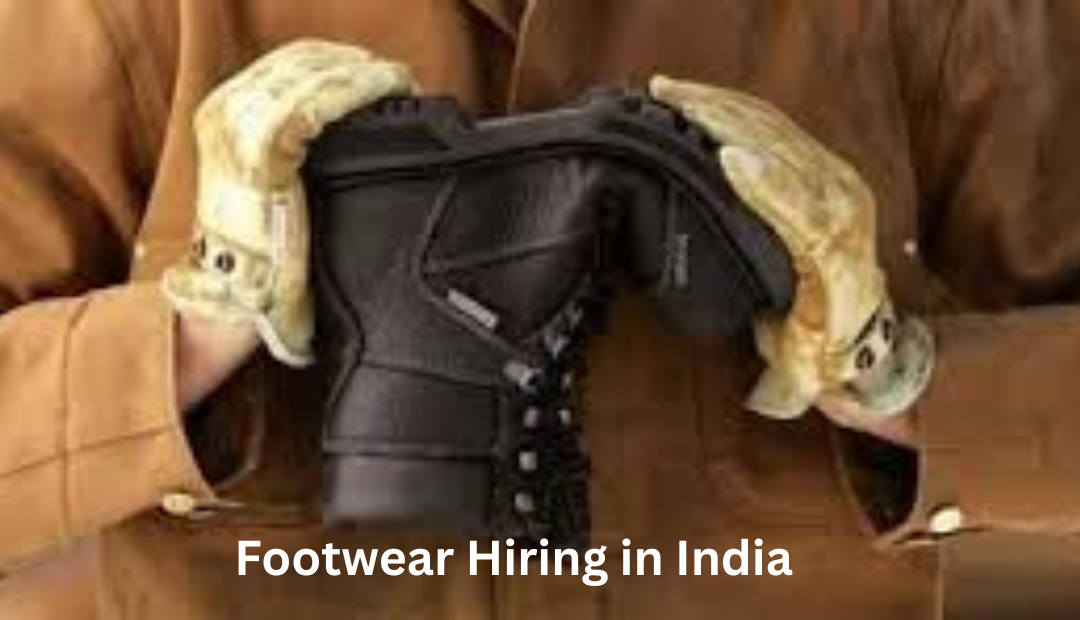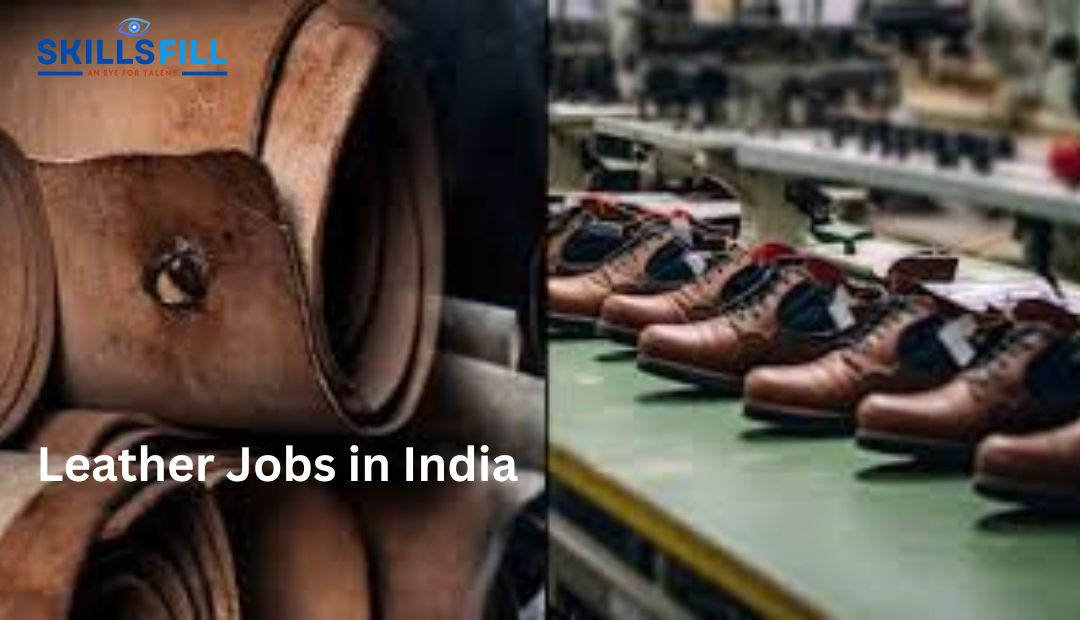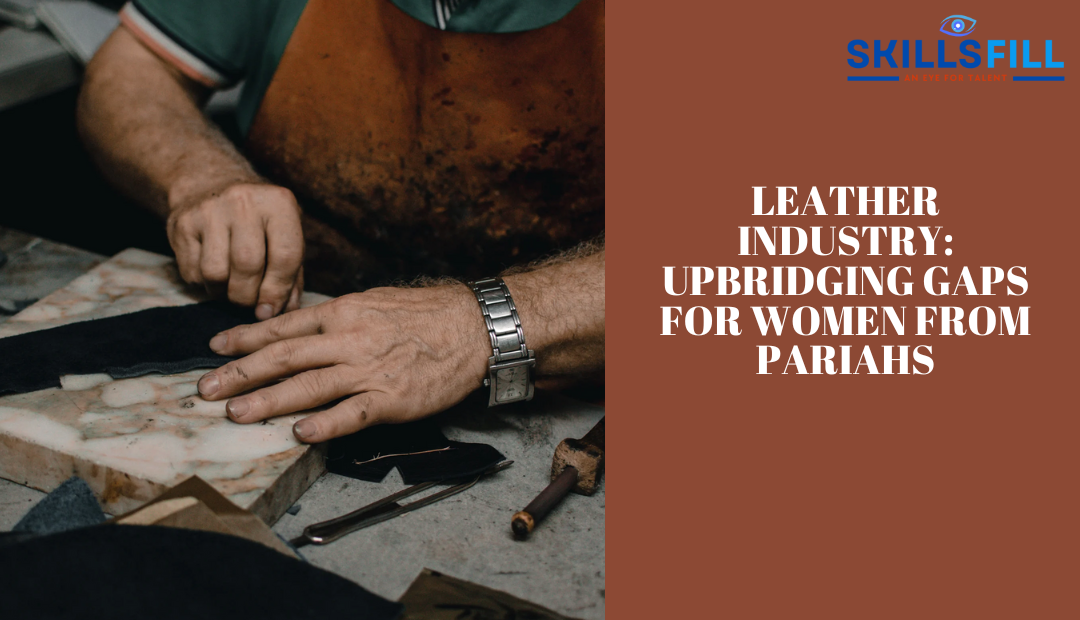India stands as one of the world’s largest leather producers, contributing significantly to the global leather market. With cities like Kanpur, Chennai, and Kolkata serving as major leather hubs, the demand for skilled leather craftsmen continues to grow. Whether you’re a fresh graduate looking for career opportunities or someone wanting to start your own leather business, proper training is essential.
The leather industry in India employs over 4 million people and generates exports worth billions of dollars annually. This creates numerous opportunities for those with proper leather working skills. From traditional craftsmanship to modern manufacturing techniques, leather skills training programs across India offer comprehensive learning experiences.
Learning leather skills opens doors to various career paths including leather goods manufacturing, footwear production, automotive leather interiors, and luxury leather accessories. The industry welcomes both traditional artisans and technically trained professionals, making it an inclusive field for skill development.
Most training programs focus on practical skills like cutting, stitching, dyeing, and finishing leather products. Students learn to work with different types of leather including cow hide, buffalo leather, goat skin, and sheep skin. The training also covers quality control, design principles, and business aspects of leather work.
The duration of leather skills training varies from short-term courses of 3-6 months to comprehensive programs lasting 1-2 years. Many institutes offer flexible timing options including weekend classes and evening batches to accommodate working professionals and students.
Modern leather training programs combine traditional Indian craftsmanship with contemporary manufacturing techniques. Students learn both hand-crafting methods passed down through generations and machine-based production suitable for commercial manufacturing.
Training institutes across India maintain strong connections with leather companies, ensuring students get real-world exposure through internships and industrial visits. This practical approach helps bridge the gap between classroom learning and industry requirements.
The leather skills training ecosystem in India includes government-funded institutes, private training centers, and industry-sponsored programs. Each type offers unique advantages, from affordable fees to specialized equipment and expert faculty.
Students can choose specializations based on their interests and career goals. Popular specializations include footwear manufacturing, leather garments, bags and accessories, automotive leather, and export-oriented products.
The training curriculum typically covers leather science, tanning processes, quality assessment, design development, production planning, and marketing strategies. This comprehensive approach ensures graduates are well-prepared for various roles in the leather industry.
Certification Programs for Leather Artisans in India
Certification programs play a crucial role in validating the skills of leather artisans and enhancing their employability. Various organizations in India offer recognized certifications that are valued by employers and help professionals advance their careers.
The Central Leather Research Institute (CLRI) in Chennai offers some of the most prestigious certification programs in leather technology. Their courses cover leather processing, footwear technology, and leather goods manufacturing. CLRI certifications are widely recognized by leather companies across India and internationally.
The National Institute of Fashion Technology (NIFT) provides certification in leather design and accessories. These programs focus on creative aspects of leather work, including fashion accessories, handbags, and contemporary leather products. NIFT certifications are particularly valuable for those interested in the fashion and luxury goods sectors.
State governments run certification programs through Industrial Training Institutes (ITIs) and skill development centers. These programs are usually more affordable and focus on practical skills needed for immediate employment in local leather industries.
The Skill Council for Leather Sector (SCLS) offers Recognition of Prior Learning (RPL) certifications for experienced craftsmen who learned their skills informally. This helps traditional artisans get formal recognition for their expertise.
Private training institutes also offer their own certification programs. While these may not have the same recognition as government certifications, many are designed in collaboration with industry partners and provide good practical training.
International certifications like those from German or Italian leather institutes are also available through some training centers in India. These certifications can be valuable for professionals looking to work in export-oriented companies or international markets.
The certification process typically involves both theoretical and practical examinations. Students must demonstrate their ability to work with different types of leather, use various tools and machines, and produce quality finished products.
Most certification programs require candidates to complete a certain number of training hours and submit a portfolio of their work. This ensures that certified professionals have both knowledge and practical experience.
Certification renewal is required in some programs to ensure professionals stay updated with new techniques and industry standards. This continuous learning approach helps maintain the quality and relevance of certified professionals.
Many certification programs include placement assistance, helping graduates find suitable employment opportunities. Training institutes often have partnerships with leather companies that prefer hiring certified professionals.
The cost of certification programs varies widely, from free government programs to premium private certifications costing several thousand rupees. Students should choose programs based on their career goals and financial capacity.
Online certification options have become available, especially for theoretical components of leather science and business aspects. However, practical skills training still requires hands-on experience in well-equipped workshops.
Career Opportunities After Leather Skills Training in India
The leather industry offers diverse career paths for trained professionals, ranging from traditional craftsmanship roles to modern management positions. Understanding these opportunities helps students make informed decisions about their specialization and career planning.
Manufacturing roles form the backbone of leather industry employment. Trained professionals can work as leather technicians, quality control inspectors, production supervisors, and skilled craftsmen in leather processing units. These positions require good technical knowledge and hands-on experience with leather working tools and machinery.
Design and development careers attract creative individuals interested in product innovation. Leather designers work on footwear, handbags, garments, and accessories, combining aesthetic sense with technical knowledge. These roles often require additional training in design software and fashion trends.
Export-oriented companies offer excellent opportunities for leather professionals with good communication skills and understanding of international quality standards. Export executives, quality assurance managers, and international business development roles are well-paying positions in this sector.
Entrepreneurship opportunities abound in the leather sector. Many trained professionals start their own leather goods manufacturing units, retail stores, or service businesses. Small-scale leather workshops can be started with modest investment and gradually expanded based on market demand.
Technical roles in tanneries and leather processing units require specialized knowledge of chemical processes and environmental regulations. These positions often come with good salaries and growth prospects as experienced professionals are in high demand.
Sales and marketing positions in leather companies require understanding of both products and market dynamics. Trained professionals who develop business skills can advance to managerial roles overseeing regional sales or marketing operations.
Quality control and testing roles are crucial in the leather industry, especially for export-oriented companies. Professionals trained in leather testing methods and quality standards find good opportunities in both manufacturing and independent testing laboratories.
Research and development positions are available with organizations like CLRI and private companies investing in innovation. These roles require advanced technical knowledge and often additional qualifications in chemistry or materials science.
Teaching and training opportunities exist in various institutes offering leather skills programs. Experienced professionals can become instructors, sharing their knowledge with new students while continuing to develop their own expertise.
Freelance and consulting opportunities are available for experienced professionals who want flexible work arrangements. Leather consultants help companies improve their processes, develop new products, or solve technical problems.
Government positions in leather development departments, export promotion councils, and quality control agencies offer stable careers with good benefits. These roles often involve policy development and industry promotion activities.
International career opportunities exist for skilled professionals willing to work abroad. Countries with growing leather industries often seek experienced Indian professionals who can contribute their expertise.
The earning potential varies significantly based on role, experience, and location. Entry-level positions typically start around ₹15,000-25,000 per month, while experienced professionals can earn ₹50,000-1,00,000 or more in senior positions.
Career advancement often involves continuous learning and skill development. Professionals who stay updated with new technologies and market trends tend to advance faster in their careers.
Top Companies Hiring Leather Skilled Professionals
The Indian leather industry includes numerous companies ranging from large multinational corporations to specialized manufacturers. Understanding which companies offer the best opportunities helps job seekers target their applications effectively.
Bata India Limited stands as one of the largest footwear manufacturers in India, employing thousands of leather professionals across their manufacturing facilities. The company offers good career growth opportunities and invests in employee training and development programs.
Liberty Shoes Limited, headquartered in Karnal, Haryana, is another major employer in the footwear sector. They manufacture both domestic and export products, providing opportunities for professionals interested in international markets.
Relaxo Footwears Limited has grown significantly in recent years and offers positions across manufacturing, design, quality control, and marketing. Their focus on innovation creates opportunities for technically skilled professionals.
Mirza International Limited, based in Kanpur, specializes in leather footwear exports and employs skilled professionals in production, quality assurance, and export operations. They offer competitive salaries and international exposure.
Farida Group, operating from Chennai, is a major leather exporter offering opportunities in tanning, finishing, and export operations. Their focus on sustainable practices attracts professionals interested in environmental aspects of leather processing.
Murugappa Group companies, including TI Cycles and other leather-related businesses, offer diverse opportunities across different segments of the leather industry. They have a strong reputation for employee development and career growth.
Hind Rectifiers Limited and other companies in the leather chemicals sector employ professionals with knowledge of tanning processes and chemical applications. These roles often require specialized technical knowledge.
Regional leather companies in cities like Kanpur, Chennai, Kolkata, and Jalandhar offer numerous opportunities for local employment. These companies often provide good learning experiences and career advancement prospects.
Export houses and trading companies employ professionals with knowledge of international markets and quality standards. These positions often involve travel and international business development activities.
Leather machinery manufacturers employ skilled professionals who understand both leather processing and mechanical systems. These specialized roles often come with attractive compensation packages.
Automotive leather suppliers like those serving Maruti Suzuki, Hyundai, and other car manufacturers offer opportunities in specialized leather processing and quality control. These roles require understanding of automotive industry standards.
Fashion and luxury goods companies increasingly hire leather professionals for product development and manufacturing. These positions combine traditional leather skills with contemporary design requirements.
Government organizations like the Leather Export Promotion Council and various development agencies offer positions in policy development, research, and industry promotion. These roles provide stable careers with social impact.
Multinational companies with operations in India often seek experienced leather professionals for senior positions. These roles typically offer international exposure and competitive compensation packages.
Government Schemes for Leather Industry Training
The Government of India recognizes the importance of the leather industry for employment generation and export earnings. Various schemes have been launched to promote skill development and support the growth of this sector.
The Pradhan Mantri Kaushal Vikas Yojana (PMKVY) includes leather skills training as one of its priority sectors. Under this scheme, candidates can receive free training in various leather working skills with additional financial incentives upon successful completion of certification.
The Ministry of Micro, Small and Medium Enterprises (MSME) operates several schemes supporting leather entrepreneurship. The Prime Minister’s Employment Generation Programme (PMEGP) provides loans and subsidies for starting leather-based businesses.
The Skill India initiative specifically targets the leather sector through specialized training programs. These programs are designed in collaboration with industry partners to ensure relevance and employment opportunities for trained professionals.
State governments operate their own skill development programs focusing on local leather industries. For example, Uttar Pradesh government runs special programs for Kanpur’s leather industry, while Tamil Nadu focuses on Chennai’s leather hub.
The Stand-Up India scheme provides financial support for starting leather businesses, particularly encouraging participation from women and marginalized communities. This scheme offers loans with favorable terms for leather entrepreneurs.
The Leather Sector Skill Council, established under the National Skill Development Corporation, designs and implements various training programs with government support. They work closely with industry partners to ensure training quality and relevance.
The Mudra Yojana provides small loans for leather artisans and entrepreneurs looking to expand their businesses or purchase equipment. This scheme has particularly benefited small-scale leather workers across India.
Industrial Training Institutes (ITIs) across India offer leather skills training under government funding. These programs are usually free or heavily subsidized, making them accessible to students from all economic backgrounds.
The Ministry of Textiles includes leather in its skill development initiatives, providing funding for training programs and infrastructure development in leather training institutes.
Export promotion schemes like the Merchandise Exports from India Scheme (MEIS) provide incentives for leather exporters, creating demand for skilled professionals in export-oriented companies.
The Technology Upgradation Fund Scheme (TUFS) supports leather companies in modernizing their equipment and processes, creating opportunities for technically trained professionals who can work with new technologies.
Women entrepreneurship schemes specifically encourage female participation in the leather industry through special training programs, financial support, and mentorship opportunities.
Rural development programs include leather skills training as a means of generating employment in rural areas where traditional leather working communities exist. These programs help preserve traditional skills while introducing modern techniques.
The Atmanirbhar Bharat initiative emphasizes domestic manufacturing and has led to increased support for leather industry development, including enhanced funding for training programs and infrastructure development.
Research and development grants are available for leather technology projects, creating opportunities for advanced professionals and encouraging innovation in the industry.
The application process for government schemes typically involves registering with designated agencies, meeting eligibility criteria, and completing required documentation. Many schemes have age limits, educational requirements, or income criteria that applicants must meet.
Monitoring and evaluation systems ensure that government-funded training programs maintain quality standards and achieve their employment generation objectives. Regular assessments help improve program effectiveness and address industry needs.
The impact of government schemes has been significant, with thousands of professionals trained annually and numerous successful leather businesses established with government support. These programs continue to evolve based on industry feedback and changing market requirements.
Looking ahead, the government plans to expand leather skills training programs, introduce new technologies, and strengthen industry partnerships to ensure the continued growth and competitiveness of India’s leather sector.









